Aditya Jain
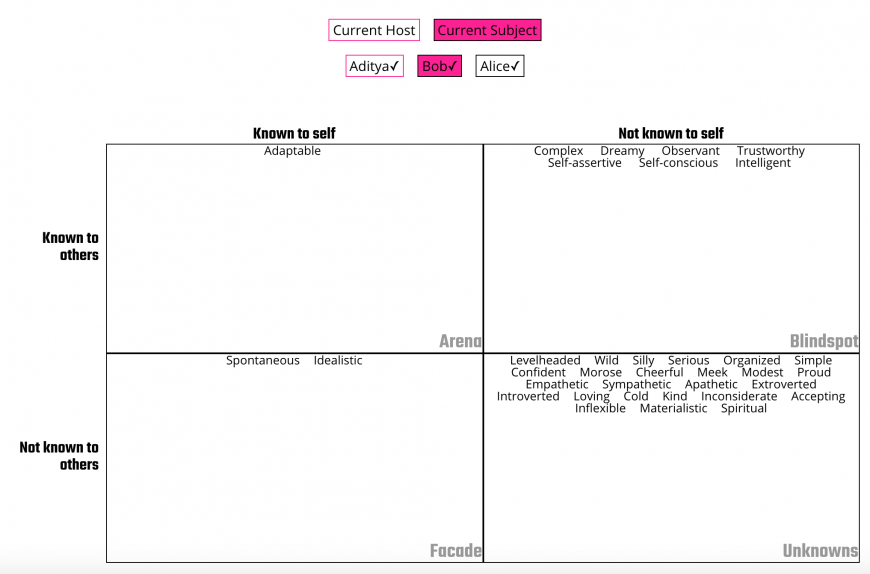
Description
The Johari window is a technique that helps people better understand their relationship with themselves and others. It was created by psychologists Joseph Luft (1916–2014) and Harrington Ingham (1916–1995) in 1955, and is used primarily in self-help groups and corporate settings as a heuristic exercise. Luft and Ingham named their model “Johari” using a combination of their first names.
In the exercise, someone picks a number of adjectives from a list, choosing ones they feel describe their own personality. The subject's peers then get the same list, and each picks an equal number of adjectives that describe the subject. These adjectives are then inserted into a two-by-two grid of four cells
Kat Vlasova
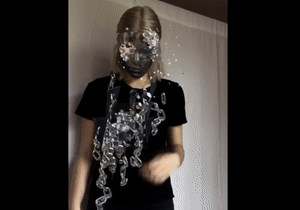
Description
ARCouture is a system of configurable fabric patches and Instagram AR filters used to create mixed reality apparel for photos/videos of users.
It functions in the following way:
The user gets a cloth base that can be sewn onto their clothing to which they then can attach different asymmetrical patches.These patches serve as AR image trackers which trigger different Instagram AR effects to appear over the user’s body based on the patch design that the camera has scanned.
When the user wants to wear a different design on their clothing, they also get a different AR overlay by using the corresponding Instagram filter and scanning the new patch design.
The main purpose of this project was to develop a product that has a tangible component that is directly linked to the user’s online presence, leverages the visual possibilities of 3 dimensional augmented reality design, and allows the user to wear multiple looks without the environmental cost of buying fast fashion frequently.
Aditya Dahiya, Fernando Gregorio , Nuntinee Tansrisakul, Tina Rungsawang, Youngmin Choi, Mimi (Yue) Yin, Yuguang Zhang
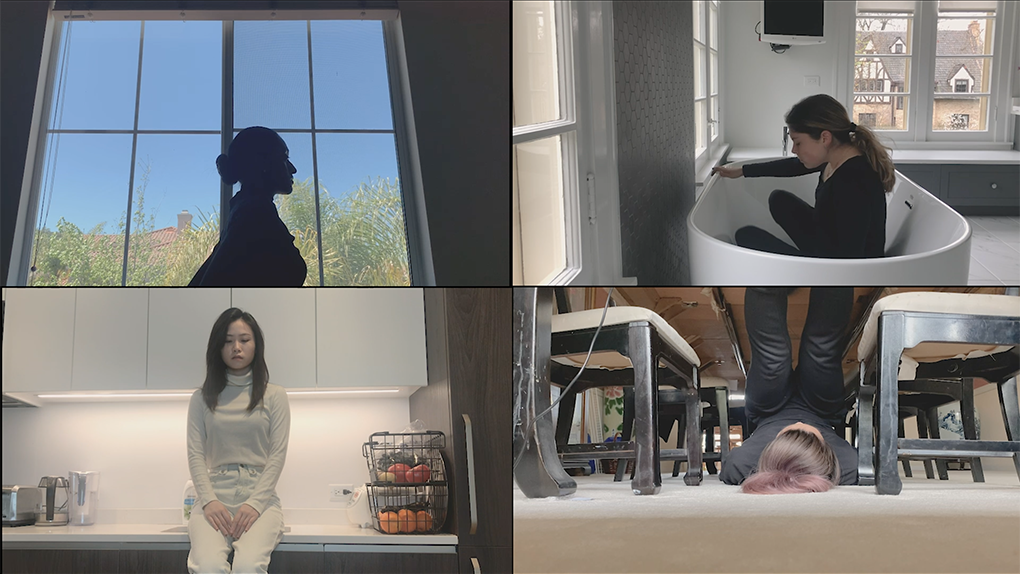
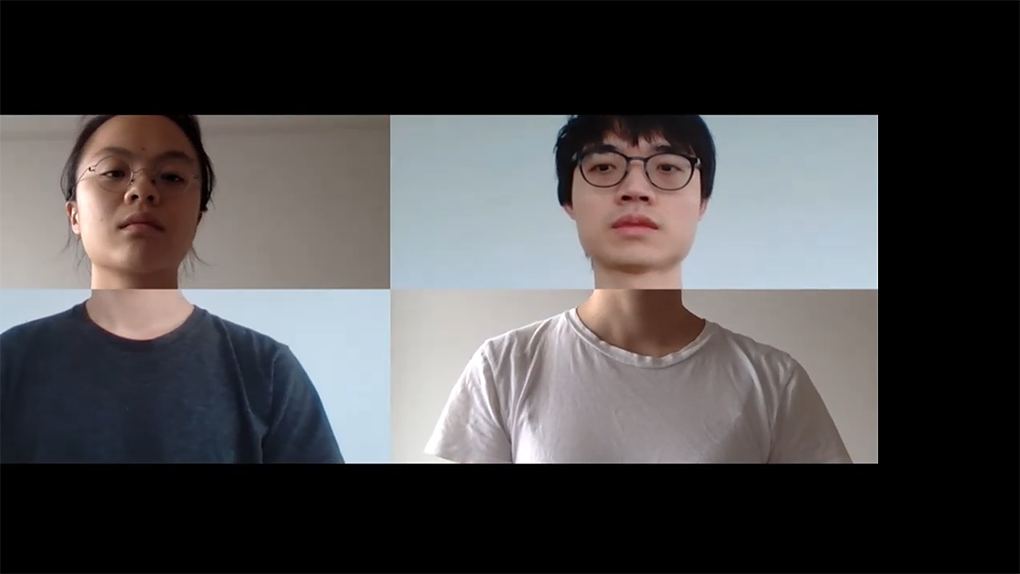
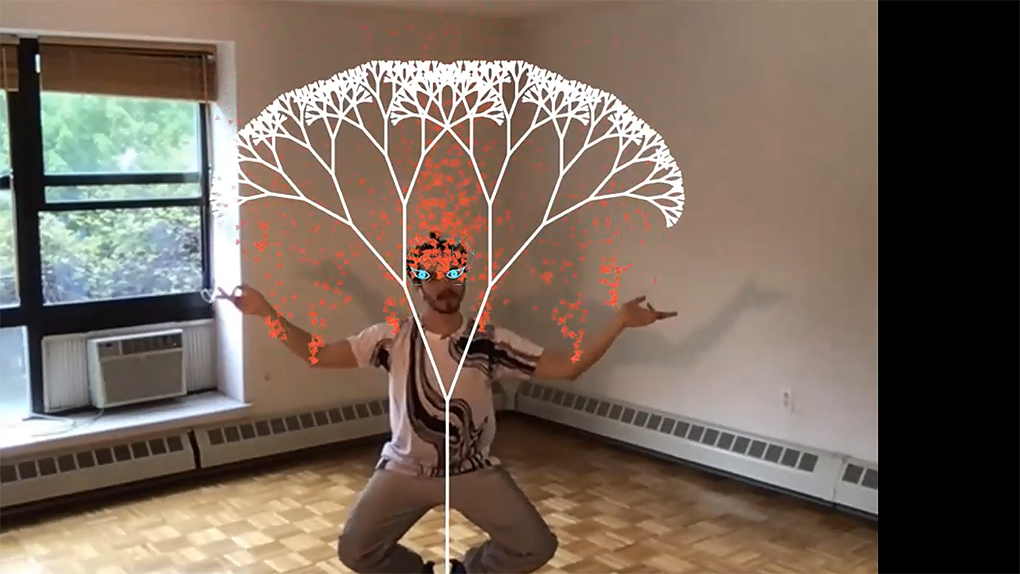

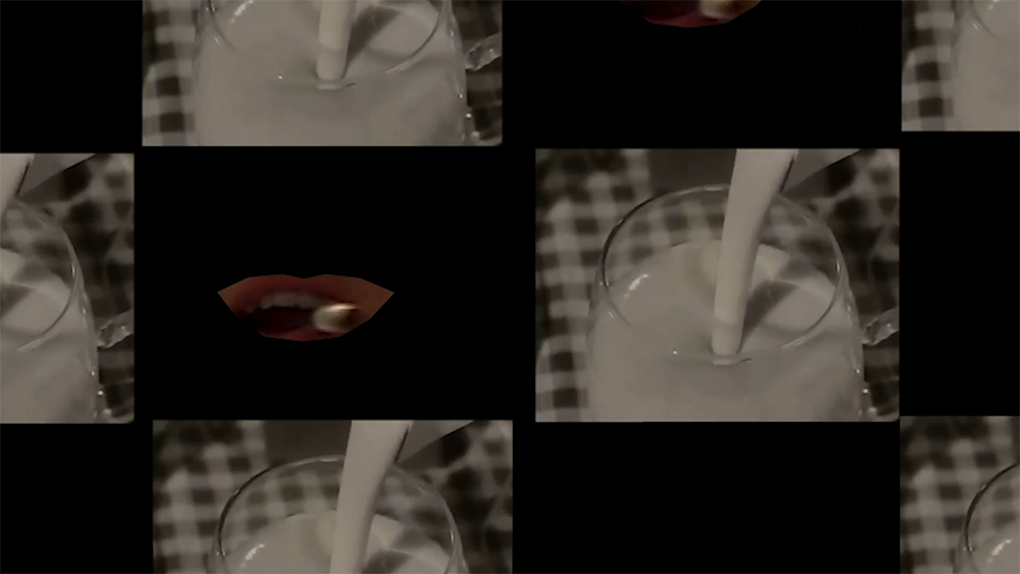

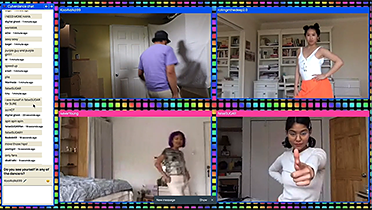
Description
Join us in Zoom for live performances:
Cut by Nuntinee Tansrisakul and Yuguang Zhang
The Firebird by Fernando Gregório Catto
cyberdance by Tina Tomthong Rungsawang, Adi Dahiya, Youngmin Choi, Adele Chi
Watch the films:
Since 03.22.2020 | Watch
Sarah Beck, Vasudha Rengarajan, Rae Ruilin Huang, and Christine Zou
Habits now just $19.99 | Watch
Sam Landa, Madison O’Halloran, Gioia von Staden, Sarah Yasmine Marazzi-Sassoon
Composition in Confinement | Watch
Defne Onen
Chun Song
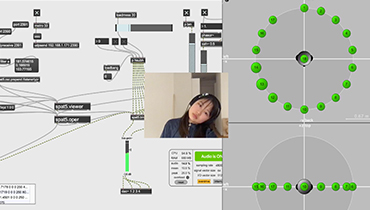
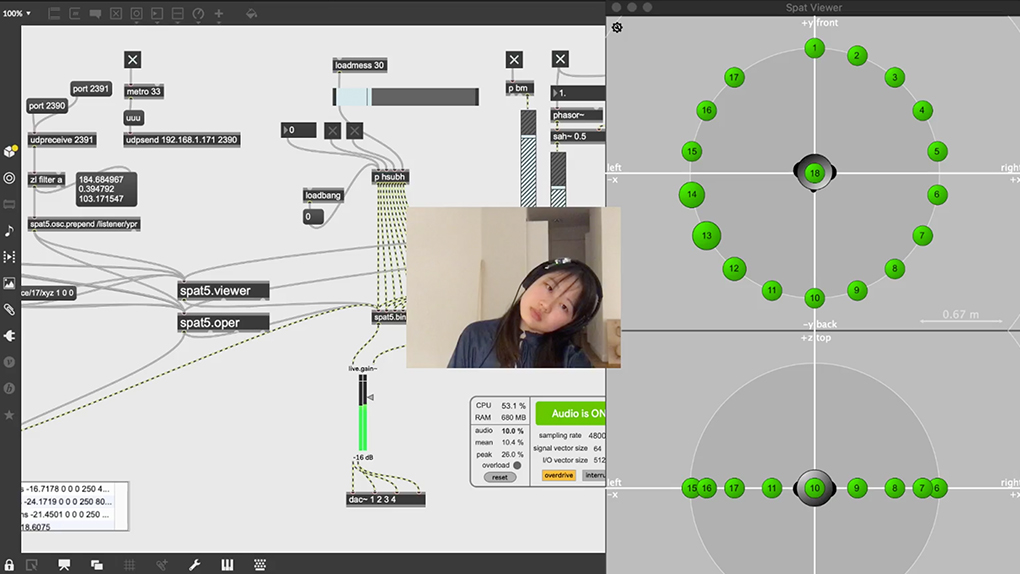
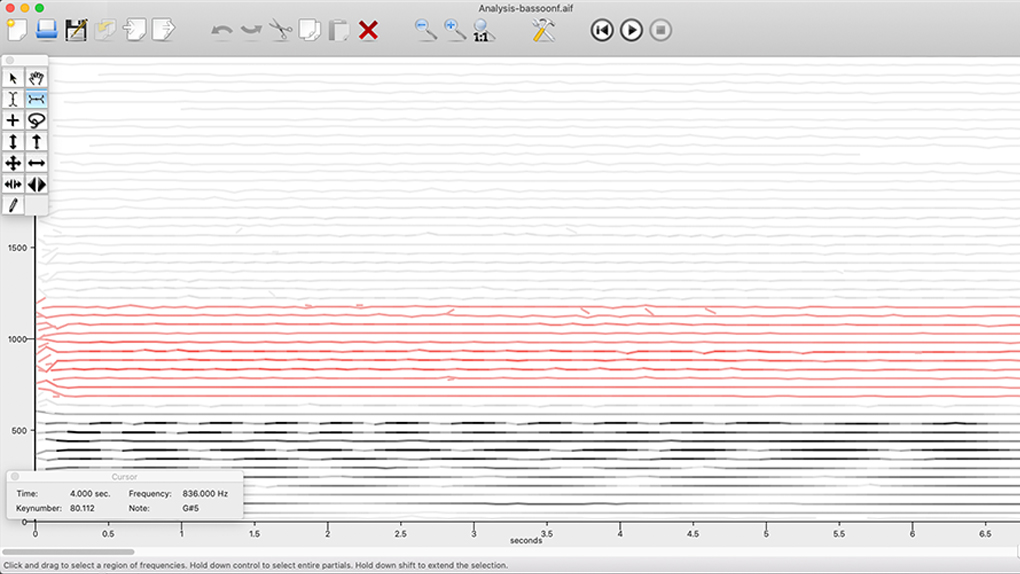
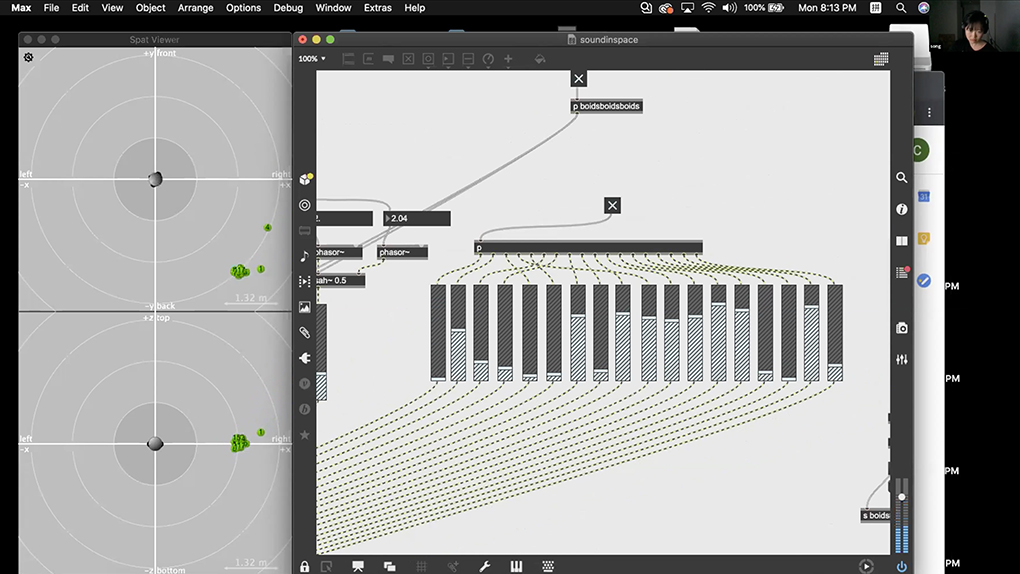
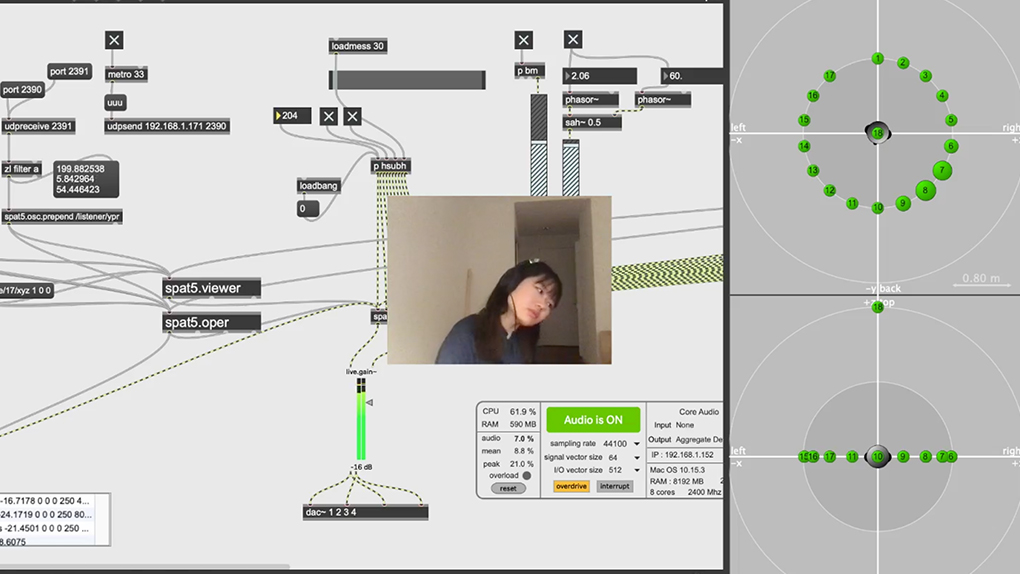
Description
Wales' songs are so spaced out to hear that what sounds like a gigantic, drawn-out and endless moan is perhaps only one consonant to them. Similarly, a bird with a high-pitched and agitated sing may perceive us as we perceive the whales. It's difficult to perceive each other with one's constant time.
Between the limits of document and fiction, the project creates a semi-fictional narrative which simulates an extraterrestrial creature with different brain processing system and unique facial organizations. Human audiences can only try to understand what it hears with their limited cognition.
, Alex Wang
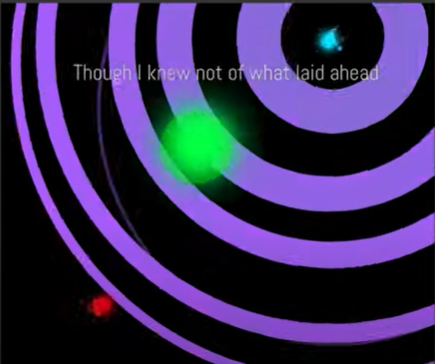
Description
Expression is a p5 sketch that allows you to control musical timbre using body position, along with a built in music synced visual for a song I produced for the Software Music Production course at steinhardt.Tone.js enables a music synced animations and lyric subtitles as well as the ability to assign different stem tracks to their own effect plugins before routing them all into the master track. Posenet from the ml5 machine learning models gives access to body positions which is then passed to manipulate the cutoff values of three lowpass filters each corresponding to a specific track: vocal, drums, or lead.This project originated from a previous project where I used the ml5 model to create a rhythm game, but I decided to add tone.js and change this towards a more musical direction. This can be used for musicians either for production or for live performances, there are countless possibilities for musicians to naturally interact with this program and express themselves in a electronic setting.
Atchareeya Name Jattuporn, Lu Lyu, Rae Ruilin Huang
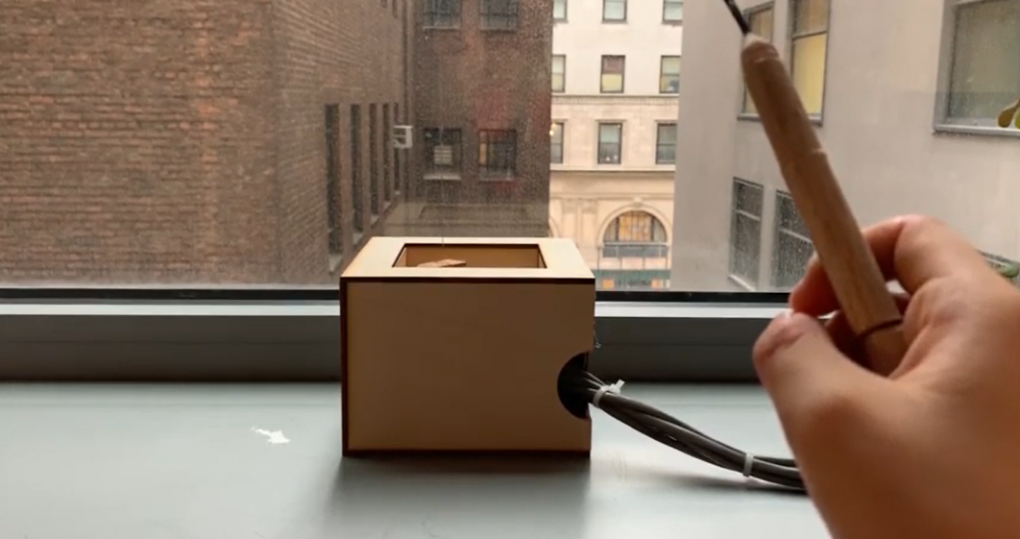
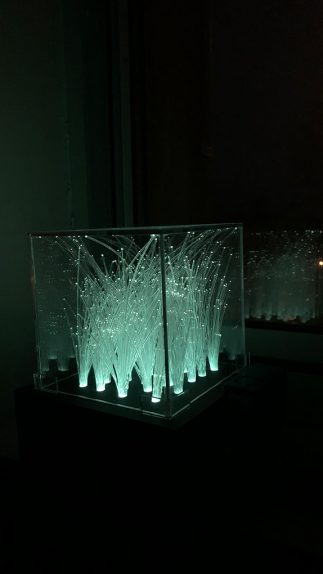
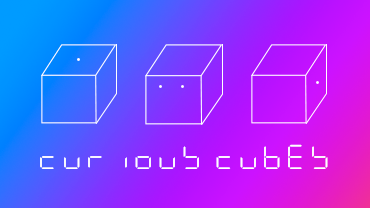
Description
Fishing Cube by Lu Lyu
I want to put the experience of fishing into a small box. As I move slowly and gently in such a tiny box, a feeling about a bigger space of leisure and peace lies in this box.
Dying for Attention Cube by Rae Ruilin Huang
What if a cube has a personality of a 3-year-old?
With this thought in mind, I made a cube that responds and reacts to human's touches. The cube has hair sticking up and when you touches it, depends on direction, it will run towards or away from you. If you didn't touch the hair in the right way, it will shake its body dramatically to show repulsion. If you leave it along for too long, every few seconds it will move one step forward cautiously. By the time you realize, it has probably run to a corner far away from you.
Dusty Cube by Atchareeya Name Jattuporn
Dusty Cube is a device that visualizes the air quality in the room by measuring the amount of PM2.5 in the air. Inside the cube, there are tiny fiber-optic cables placed in a shape of grass represented us as a living organism in a polluted circumstance. If the air quality is good the grass turn green. if not, they turned out to be more toxic colors. The color of the grass illustrates the air quality level dividing into 6 distinct categories based on an air quality basics level.
Chenhe Zhang
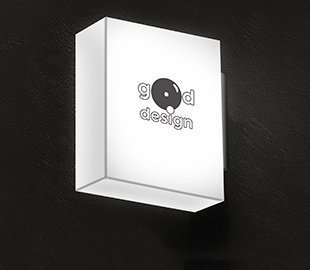
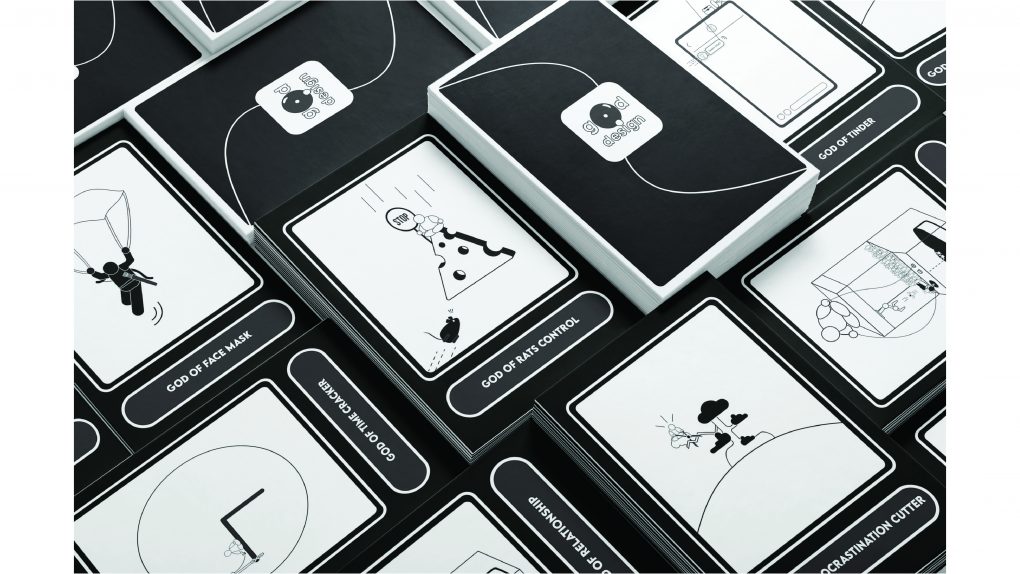
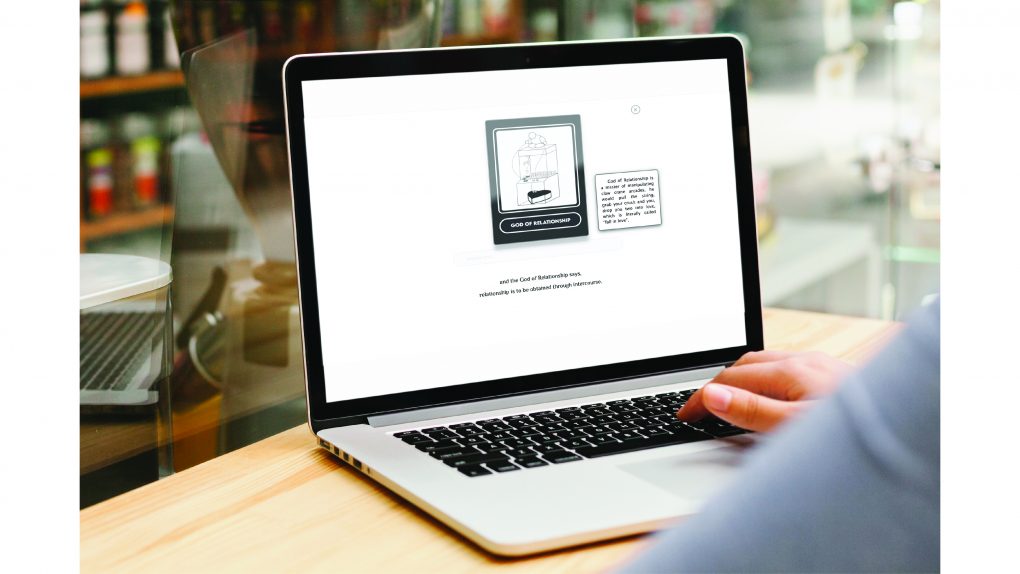
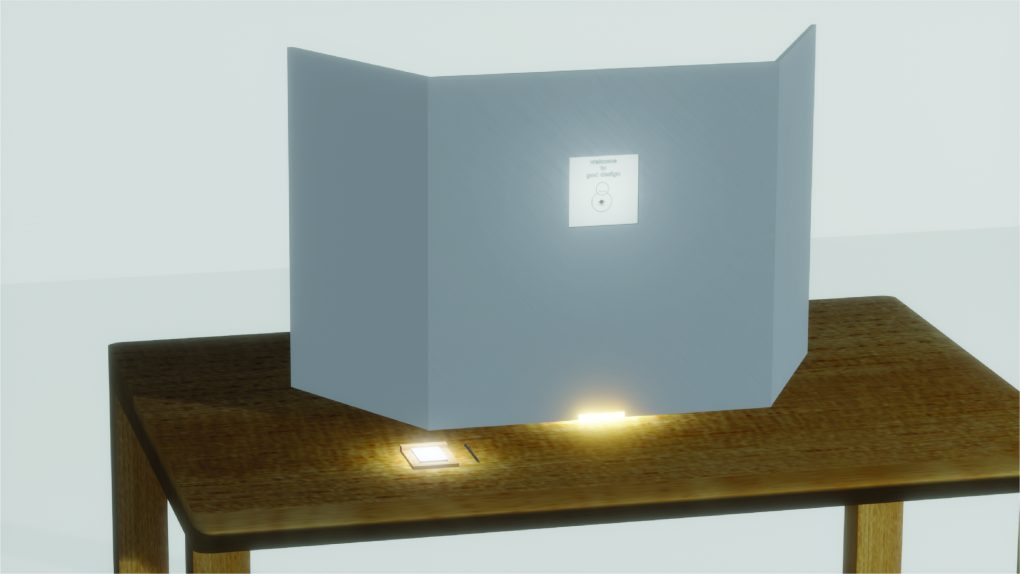
Description
Human beings create gods or gods create human beings, that is a romantic question. Growing up in a society where I could be exposed to both polytheism and monotheism, I was thinking, while new gadgets and tools were invented and upgraded to enhance people’s lives, gods haven't been updated for a rather long time. To explore the possibility of creating new gods who could specifically address problems and issues in human's daily life in a contemporary context, I use the term “god design” which means utilizing design thinking in creating new gods, everything in this project begins with this concept.
The basic layer of god design is to “design” new gods that work in a modern way, they use familiar objects that we usually see in our everyday life to impose their power just like the traditional gods use their weapons, however, the scenario they use the objects is not as usual. To showcase the gods and communicate with the audience, a booth-like interactive installation and a website are developed as “god search engine”, where the audience could input their daily life concern and being returned with a certain god that relates to their input in the form of a card. The installation took the concept of small size “pop-up” shrines that usually can be found in Japan and India, it will be finished in a hi-tech product aesthetic, and the website will be visually simple and playful.
This project is not aiming at creating a new religion, it is more about looking at everyday life from another angle, focusing on the small daily problems and concerns, delivered in a more absurd and playful way, but still, with its whimsical nature, I hope it could bring positive attitudes and a delightful experience to the audience.
Aditya Dahiya, Tina Rungsawang, Youngmin Choi
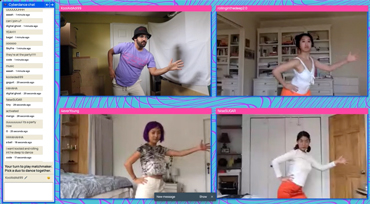
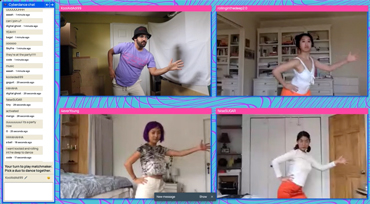
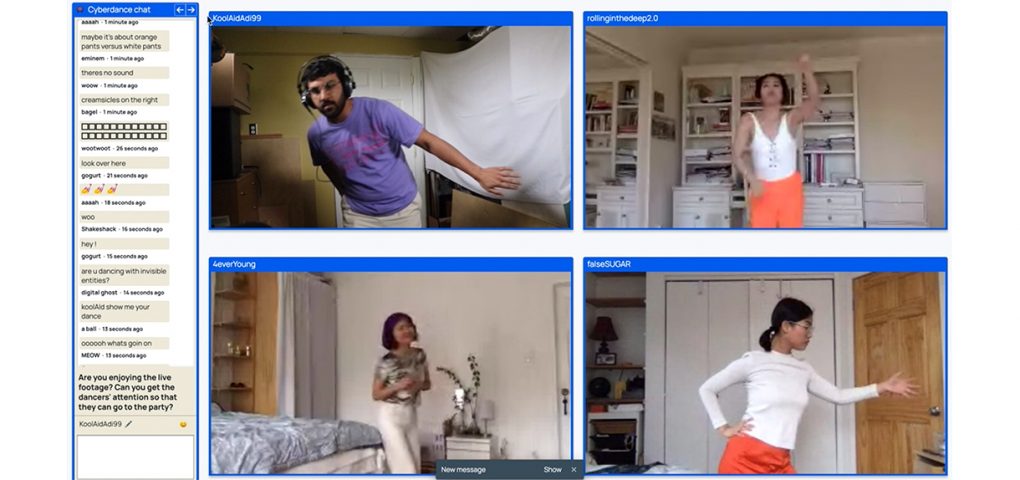
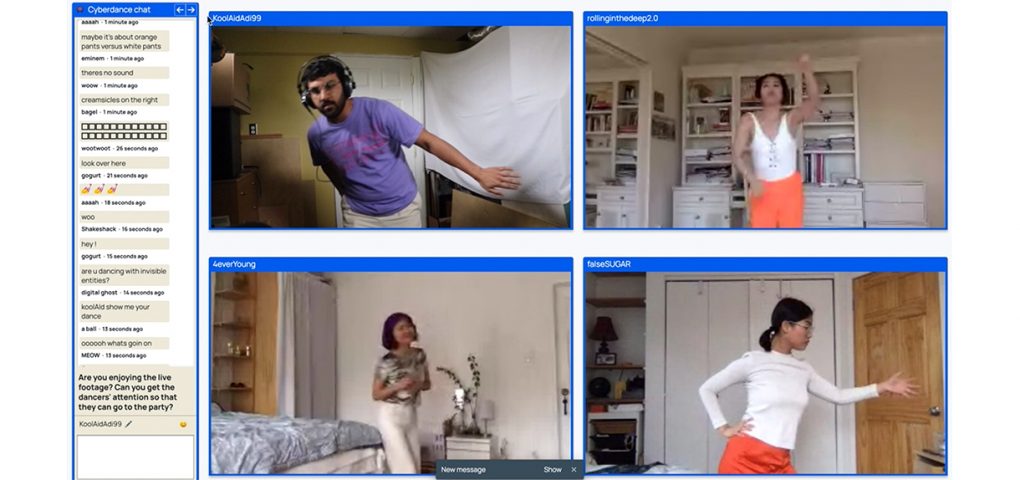
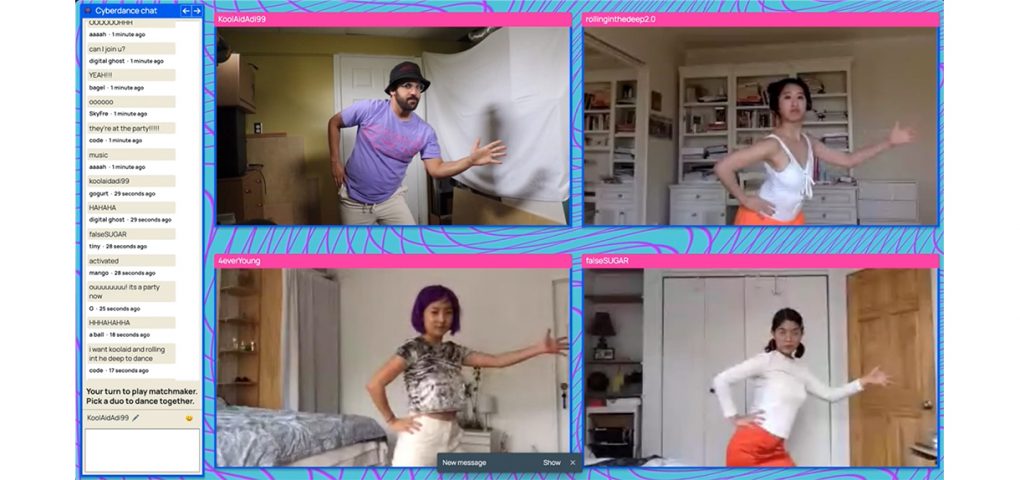
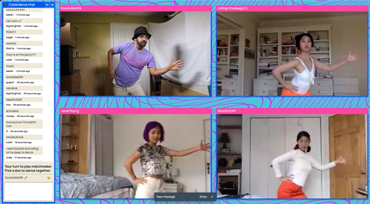
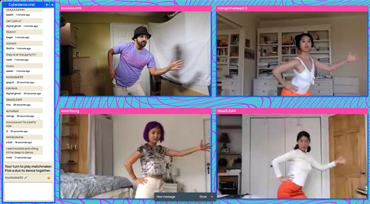
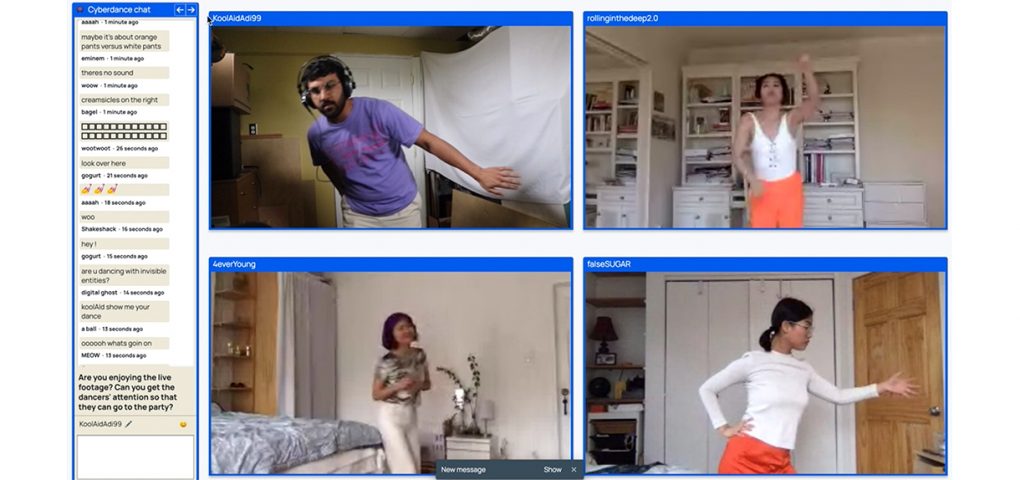
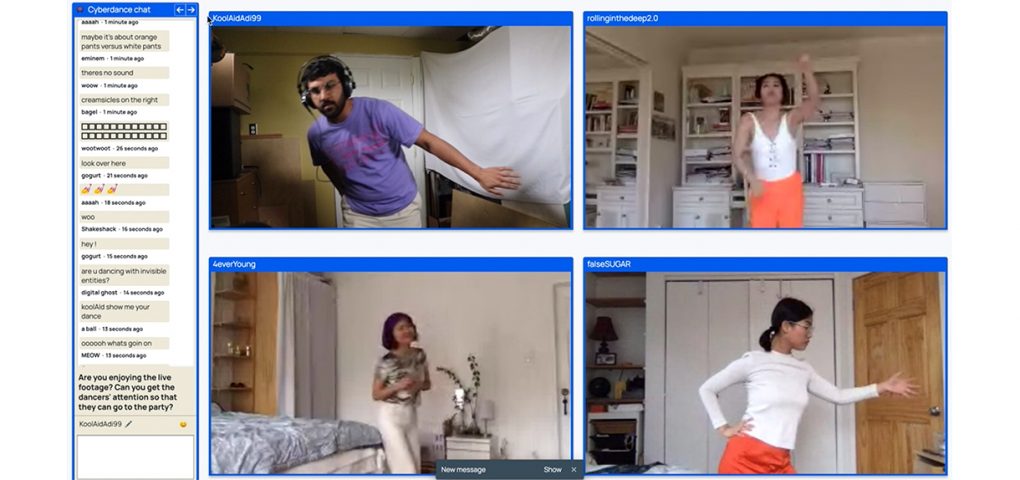

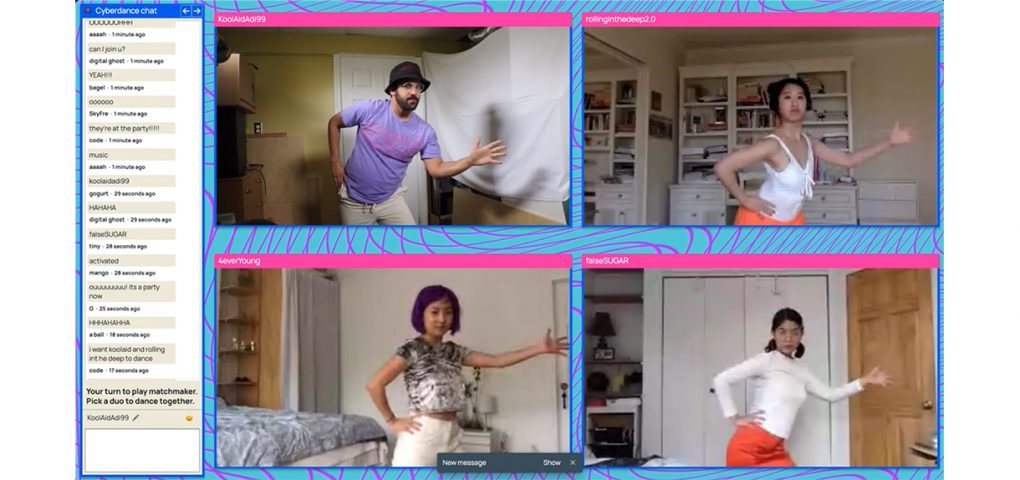

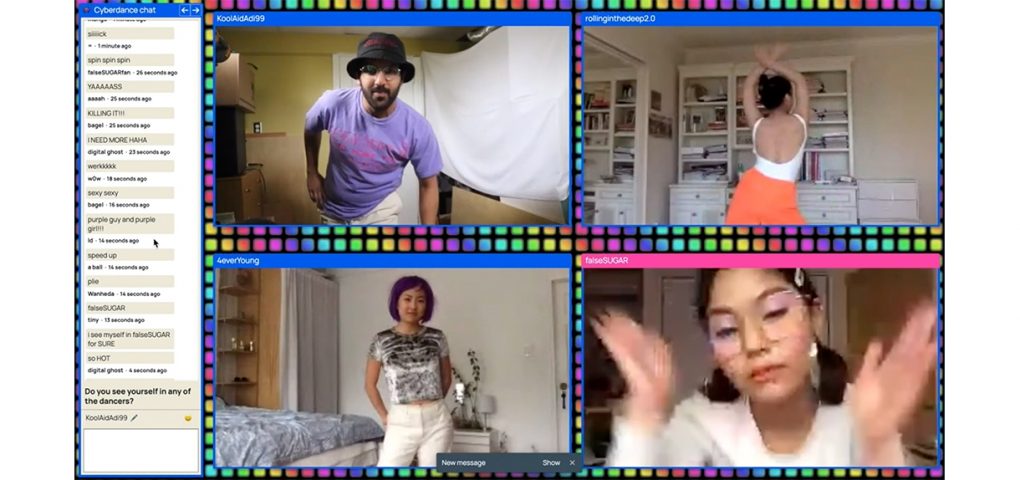
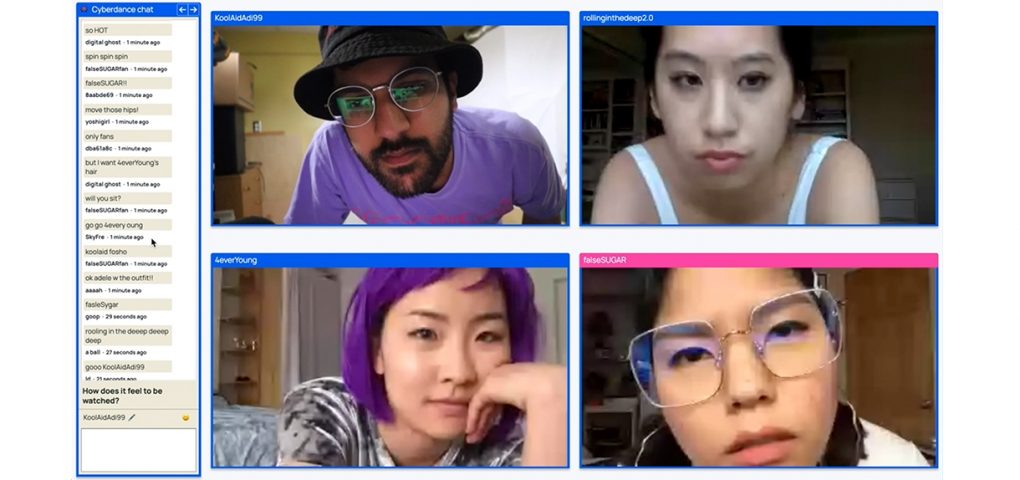
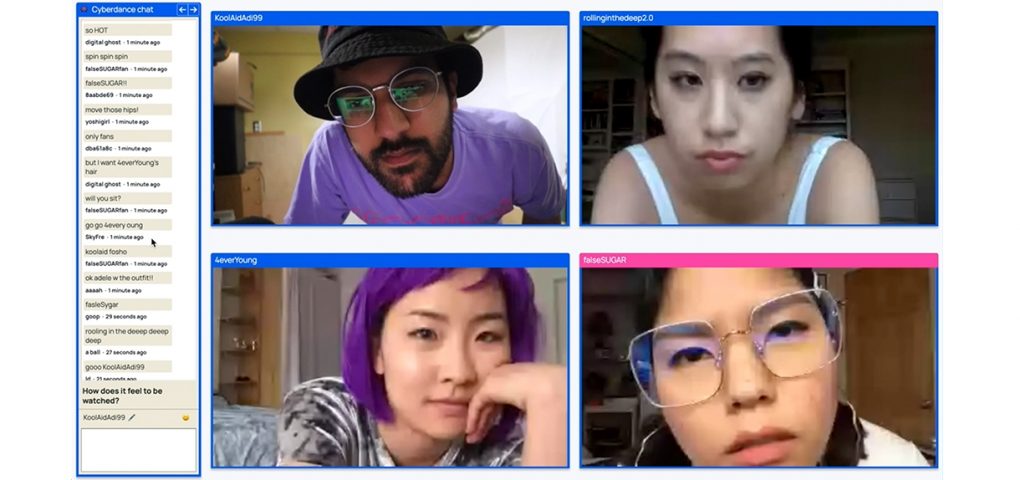
Description
Cyberdance is an interactive chat room dance experience that explores ways of expanding comfort zones through trust, intimacy, and spontaneity. It gives the audience ability to interact with each other, as well as with the performers, with immediate feedback. Cyberdance makes a statement about our current state of virtual existence and interactions through the lens of voyeurism, with an added layer of playfulness and entertainment.
Son Luu
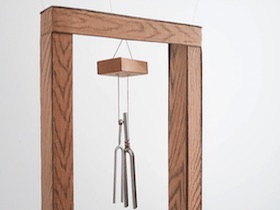
Description
Windows bring light into a room. It's a place through which you look out to nature, to the outside environment to observe and seek inspirations while in your personal space. Responding to humans' desire to enjoy and interact with nature, “Windows” is meant to bring elements from the outside environment into an indoor space in hope of helping humans stay optimistic, and continue to be inspired and creative during a time of crisis. As limited resources as there seems to be, there might just be something for us to pick up to play with and create. Indeed, it is a critical time to stay inspired and creative as we're standing in between what we're seeing in the wold and what we're hoping for.
Helen Hutchens
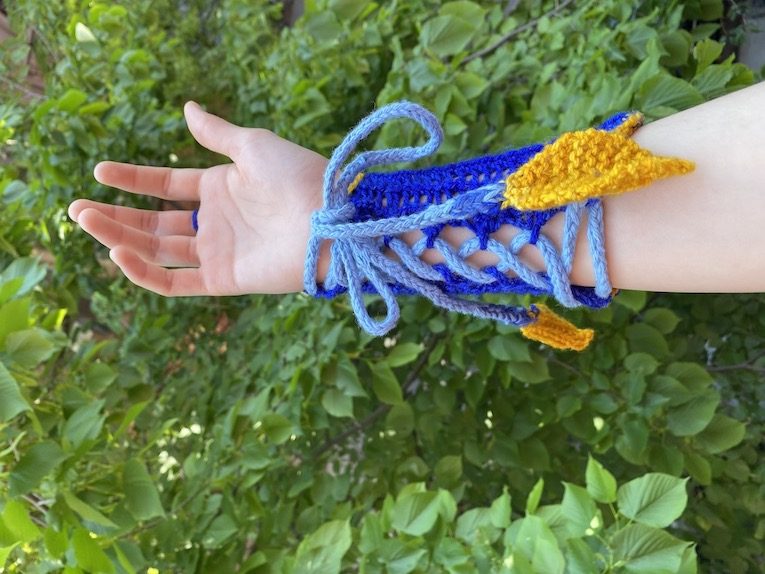
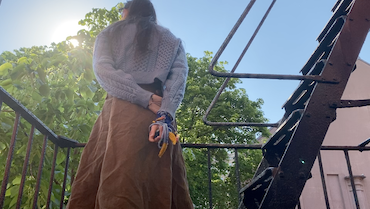
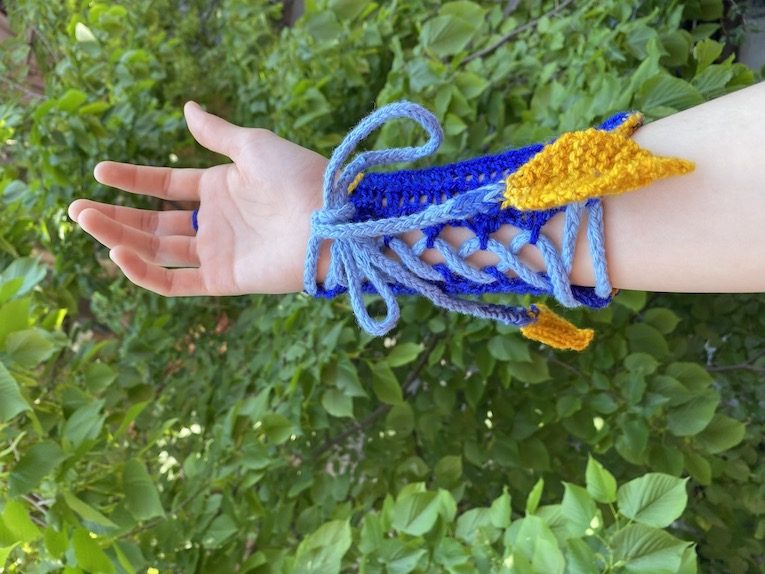
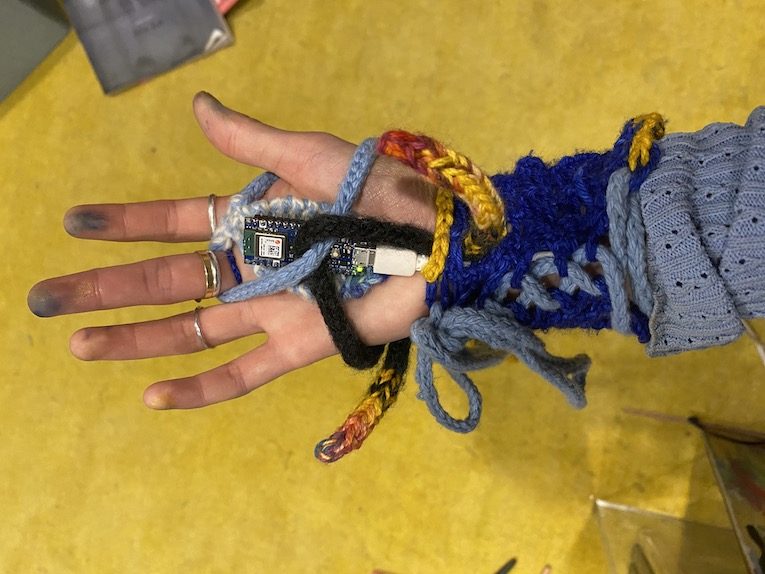
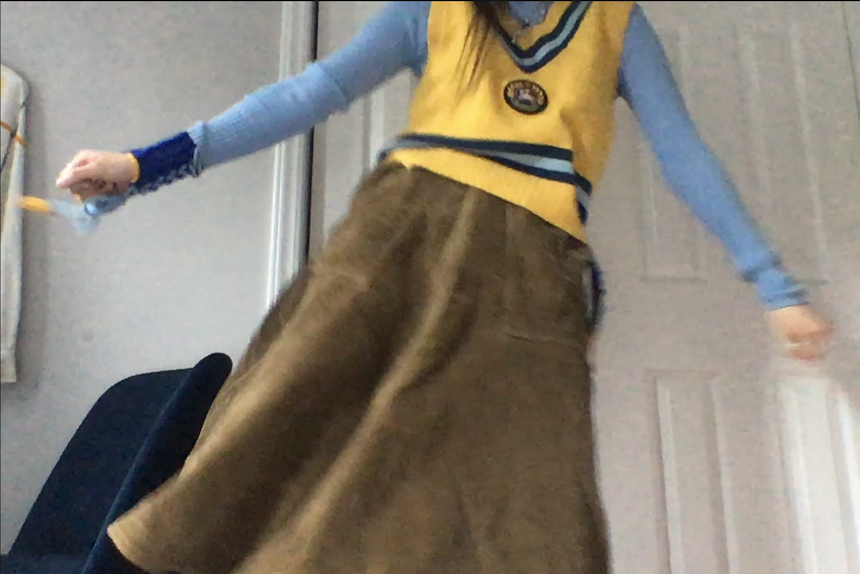
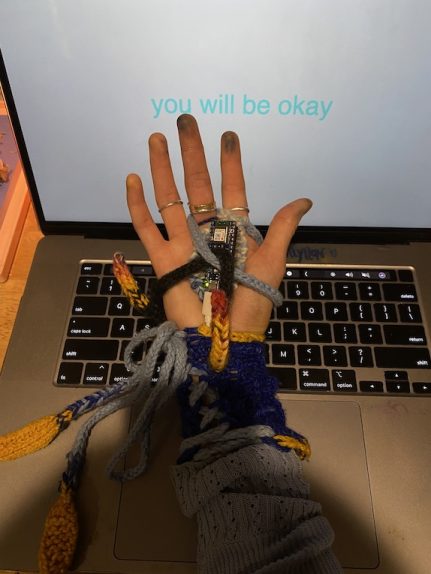
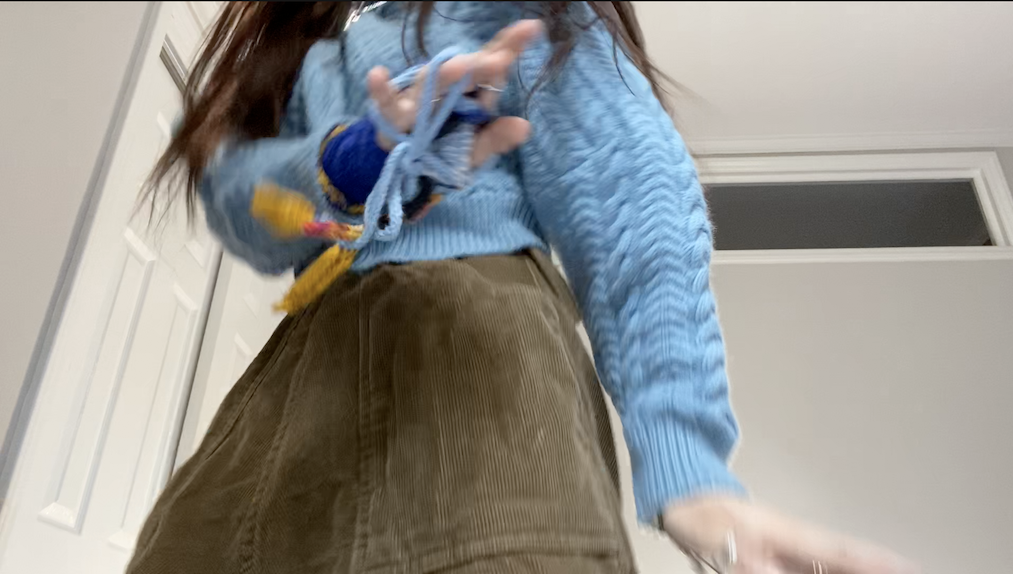
Description
These are magical, hand-knit, arcane, medieval gloves (likely worn by a wizard or herbalist or elf) modeled off archer's gauntlets from antiquity whose accelerometer data runs into p5.js. The sketch is simple: it says that “you will be okay.” The background HSB is what the parsed-through data operates on.
“You will be okay.” Is it a promise? A mantra? A wish? A cry? I'm not sure I know—perhaps that's the point. I am certain, however, of how therapeutic this work was for me to make. It was one of my first moments where I really felt like I entered a flow state when coding. I didn't plan for the text to say what it did, but I found my hands typing: ('you will be okay', positionX/2, positionY);
It was therapeutic, sitting on my fire escape knitting. Maybe I was yearning for certainty, something that came through the attempt at manufacturing some semblance of artificial control. Being able to cast spells with little arm guards I made myself in solitude felt healing. Archers wear arm guards because they do not want to get bruised by their own longbow string; for me, because I have the privileges and safety associated with having all my basic needs met like having housing stability and ample food and drink, quarantine has mainly been a battle with myself. So I like that the same body that can be so destructive to itself is also able to make something that's a shield. Like, I needed to make this because I make myself unwell sometimes. But I can make this with the same hands and make myself less unwell, too. Attenuating destructive hands with shields of soft embrace. Protective armor that still is able to say “I love the world.” Knit chainmail.
The colors are very sensitive to your motion. If your arm quivers, so do they. If you want to let out your aggression, the colors accept you. If you want to move slower, flow, dance, they mirror you. I've been dancing in my apartment a lot lately. That often makes me feel like I will be okay.